
There are 4 basic forms of quadric surfaces: an ellipsoid, a hyperboloid of one sheet, a hyperboloid of two sheets, and a torus. [Barr81] reminds us of the standard equations for these objects, and also presents the spherical product representations. A sample image of a standard quadric is given below each related equation.
Ellipsoid:

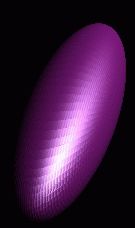
Hyperboloid of one sheet:

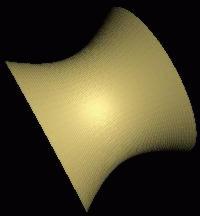
Hyperboloid of two sheets:

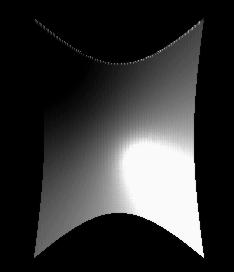
Toroid:
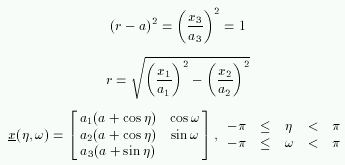
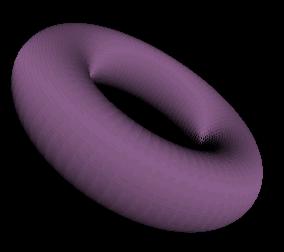
Take note of how the boundary conditions of  and
and  vary for each quadric type. Sometimes
the boundary values are included, and sometimes they are excluded. This depends
on 2 factors. Firstly, a trig function used in a quadric formula may have certain
values at which it is not defined. For example, the hyperboloids use sec
functions which are undefined at
vary for each quadric type. Sometimes
the boundary values are included, and sometimes they are excluded. This depends
on 2 factors. Firstly, a trig function used in a quadric formula may have certain
values at which it is not defined. For example, the hyperboloids use sec
functions which are undefined at  and
and
 . Secondly, the boundary values may
be defined so that the object "wraps around" and meets itself. For example, in
the ellipsoid, the boundary for
. Secondly, the boundary values may
be defined so that the object "wraps around" and meets itself. For example, in
the ellipsoid, the boundary for  is defined
so that a complete circle is formed without overlapping on itself.
is defined
so that a complete circle is formed without overlapping on itself.
In practice, quadrics are an easy class of objects to use because they have well defined normal and tangent vectors. Normal vectors are used in intensity calculations during rendering. Both the normal and tangent vectors are used to calculate the curvature of the surface. Sampling of points used to represent an object is often defined according to curvature: in regions of higher curvature, more points are used to achieve a better representation of the surface region.